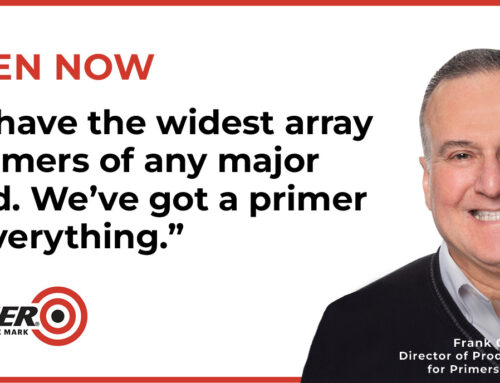 Setting up an outside sales program can open up a whole new stream of revenue for your business. There’s a set of customers out there who will reward you with long-term, consistent sales if you can cater to their unique needs with personalized attention.
Setting up an outside sales program can open up a whole new stream of revenue for your business. There’s a set of customers out there who will reward you with long-term, consistent sales if you can cater to their unique needs with personalized attention.
But for many retailers, outside sales is on the list of initiatives they’ve tried once but had a hard time getting to work. While it may sound like a good idea on paper, it’s often difficult to create an effective and sustainable program.
Paint & Decorating Retailing spoke with outside sales team leaders who have established a track record of managing successful outside sales programs. They discuss how to decide if outside sales is the right fit for your business and offer answers to some of the questions you’re most likely to ask as you get started.
Regardless of the size of your operation, you can use these basic principles to set up your own outside sales force.
 Is outside sales right for my business?
Is outside sales right for my business?
If you’re not already in outside sales, the first question to consider is, can you afford not to be? Even if you only sell to the retail customer, you may be missing out on a lot of business if you are waiting for customers to come to you, says Don Duttine, vice president of sales at JC Licht, which has 49 locations in the Chicago area.
“Think about how much you are selling to a contractor who just walks into the store. Then, imagine how much more you could be doing if you started to make a strategic investment in that customer,” he says. “Now, instead of just a vendor, you become an adviser they trust.”
As you’re considering an outside sales strategy, you’ll also want to determine your target customer segment. Start by specializing with a certain type of customer so your sales representative can become an expert at understanding their needs. You can grow from there.
“When our reps focus on a specific customer type, they learn their lingo and the products they use,” Duttine says. “That allows the customer to get a bigger ROI from our sales rep because they’re able to work as partners.”
At A&E Paint, having an outside sales staff has been critical to growth. The business, based in central Florida, has four retail locations with some retail traffic, but has found the most profit in contractor sales. With a competitor on nearly every corner, owner Nikki Young says an outside sales staff has been instrumental in gaining new customers.
“Especially if you are a new retailer, contractors may not know who you are,” she says. “They have one place where they usually shop and they’re unlikely to drive out of their way just to pick up paint. Contractors get very set in their ways. To get their business, you can’t rely on advertising or expect them to find you. Instead, you have to go out and meet them. Tell them what you can offer. Show how you will offer personalized service.”
How will I support an outside sales staff?
As you’re considering whether outside sales is right for your business, consider if you’re willing to fully support that team from the inside. An effective outside sales team will rely heavily on store staff to support their sales efforts.
“Retail stores are unbelievable lead generators,” says Duttine. “People are coming in to get paint and tools, so sales associates need to have conversations about each customer’s project to understand if they represent a lead for our sales team.”
Duttine recently introduced a lead generating tool in the company’s POS system that makes it easy for sales associates to collect and share customer information with the outside sales team.
Young says that it’s also important to offer the services that will set her business apart from the competitors and sales associates who care about quality. Every point of differentiation gives the outside salesperson more points to talk about when they’re prospecting new customers.
“Color matching, for example, has to be spot on. I can sell paint all day, but I can’t have salespeople in the store messing it up,” she says. “All sales associates have to show they care more about quality than our competitors do.”
As an added benefit for her customers, Young keeps an extensive file of drawdown cards with samples of the colors her customers have purchased so they can get an exact match any time they need to touch up paint. She also has multiple delivery vans to quickly get product out to customers when they need it.
 Who do I hire?
Who do I hire?
Don’t rush the hiring process. It’s better to wait until you get the right person than get someone to fill a spot only to find out they aren’t going to work out. If you keep changing up the sales rep you’re sending to your customers, they could get frustrated and wonder about the stability of your business.
The ideal candidate is someone who has knowledge in the paint industry but is also able to fit into the culture of your organization. You may find it’s easier to get a less experienced salesperson and give them training than hire a veteran salesperson.
“I need someone who is coachable and understands our business,” says Duttine.
He oversees 35 salespeople, so he’s looking for a cohesive culture and consistency in the way people approach the sales process.
“You can try to find the sales superstars, but they don’t always mingle well with the rest of the team. Make sure the right people are coming on board because they are the face of your company and are driving business into your organization every day.”
In addition to accepting applications from outside the company, Duttine looks for employees within the ranks who want to move up to a sales position. They have the advantage of already knowing your company processes and culture.
New hires from outside the company spend about a week in the store at JC Licht, learning how the business operates. After that, they spend three weeks traveling with an experienced sales representative. When they’re finally ready to go out on their own, Duttine schedules frequent check-ins, where the new hire talks about the challenges and growing pains of their first month.
Young emphasizes industry knowledge as she is looking for her next outside salesperson. Some of her best sources are salespeople working for her competitor. Not all of them have sales experience; one hire was a former paint contractor with practical product knowledge.
“Over the years, we’ve had a few salespeople with zero paint experience and those didn’t work out,” she says. “We won’t hire anyone who hasn’t been in the paint business. If they have a good base of paint knowledge, we can teach them how we do business.”
What should I pay them?
There are many different variations in the way retailers pay their outside sales staff, but it’s usually a combination of a base pay plus incentives. Both Young and Duttine offer their outside salespeople a combination of base salary plus a commission.
Young pays a tiered commission structure based on gross profits. The more someone sells, the greater percentage of the profits they take home.
Duttine says his pay structure is fairly nuanced, with the percentage of commission depending on several variables. He says it’s also important to understand what other retailers are paying so you stay competitive.
“Commission might depend on category and customer segment as well as sales,” he says. “There’s no one-size-fits-all answer to what to pay your outside sales reps. Our goal is to pay an outside sales rep a fair salary while they learn and develop the territory.”
Essentially, creating a pay structure that shifts the focus off making the sale allows outside salespeople to focus on what matters most: creating customer relationships. While it may be tempting to look for the biggest sale, that approach is often done at the expense of creating a long-term customer. A better approach is cultivating relationships that will pay consistent dividends over time.
How do I build a customer base?
If you want to build a solid base of customers, resist the urge to sell strictly on price.
“As you’re prospecting for new customers, the easiest thing to do is to sell on price,” says Duttine. “But if we sell a customer on price, we will eventually lose them on price. Your relationship with the customer becomes a commodity.”
Instead, he directs his sales team to talk more about the customer and their business, understanding their challenges, goals and the services they offer.
By understanding the challenges his customers are facing and presenting them with solutions, he moves up the ladder from being merely a salesperson who sells a product to a trusted adviser who can be a partner in their business.
Building a customer base will take time, especially for new hires who may be carving out a new sales territory. In the first two or three months of a new hire, measure success by activity rather than only quantity of sales. You may also need to spend more time with them, coaching and mentoring.
“Looking at call sheets is important in the first couple of months of a new sales rep,” says Young. “They need to be trending upward, even if it’s just in the number of new accounts they open. By the third month, their sales need to start coming in and we need to be confident we can quickly get them to the break-even point where their sales are at least covering the cost of having them.”
An effective salesperson also needs an organized plan for how they will grow their territory and maintain existing relationships. Duttine suggests putting customers into four buckets.
“We divide customers into each territory’s top account (key customers); customers in the territory who offer the largest opportunity for growth, (opportunity customers); core customers who are not in the first two buckets (existing core customers); and finally customers who represent the future lifeblood of a territory (new customers),” he says.
“Make sure that each customer falls into one of those areas and set goals for where you want to move them next. You should be addressing customers in each area every day to maintain a healthy territory.”
 “For new hires, the number of quality calls made in a day and the number of new accounts opened in a period of time are great indicators of their progress,” says Duttine. “You need to make sure they are also focusing on their existing customers. Show them the correlation between sales and customer contact, even if they are just planting a seed for a new customer. Your future growth will come from the relationships you make today.”
“For new hires, the number of quality calls made in a day and the number of new accounts opened in a period of time are great indicators of their progress,” says Duttine. “You need to make sure they are also focusing on their existing customers. Show them the correlation between sales and customer contact, even if they are just planting a seed for a new customer. Your future growth will come from the relationships you make today.”







